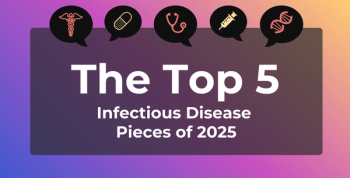
CDI Prevention Precautions Appear to Drive Down In-Hospital Transmission Rates
Modeling done based on data from a single hospital suggests a transmission-prevention regime meaningfully reduced hospital-onset Clostridioides difficile infection (CDI).
Efforts to use contact precautions and isolation (CPI) to control the spread of
Guidelines for CDI control include hand hygiene, wearing gloves and gowns, and isolating patients with confirmed cases of CDI in a room or ward with dedicated toilet facilities, noted the study authors
Still, the number of multidrug-resistant organisms continues to grow. Given the costs in time and money associated with infection prevention and control, the investigators decided to investigate what impact contact precautions and isolation might have at a single hospital before, during, and after the precautions were put in place.
The authors examined 3 distinct time frames because the hospital in the study, Gangnam Severance Hospital, implemented a contact precaution and isolation program in April 2016; it suspended the program in the spring of 2021 because the COVID-19 pandemic led to a lack of available isolation rooms.
To evaluate the efficacy of those precautions, the authors used analytical modeling to compare incidence rates of health care facility–associated CDI (HCFA-CDI) with expected rates based on their models. The analysis covered 3 time periods: January 2012 through March 2016 (preintervention period), April 2016 through April 2021 (intervention period), and May 2021 through December 2022 (postintervention period).
The investigators found significant changes over the time periods. During the intervention period, the monthly observed incidence rate of HCFA-CDI was 44.9 cases per 100,000 inpatient days, about half of what would be expected, the authors said. Once the interventions stopped due to COVID-19, the incidence rate increased to 52.3 cases per 100,000 inpatient days, about 30% higher than predicted.
“The potential causal effect of CPI on CDI occurrence did not change, even after controlling for confounding variables,” the authors said.
They added, however, that there was a spike in cases in the final 2 months of 2022, which may have led to overinflated predictions and thus an overestimate of the impact of stopping the precautions.
As the hospital’s decision to end contact precautions and isolation was halted by the pandemic, the authors said experts should think proactively about what to do in future pandemic situations.
“Learning from the COVID-19 pandemic, it will be necessary to propose guidelines on the order of priority for transmissible pathogens requiring special infection control measures in resource-limited settings,” they wrote.
The authors noted limitations to their study, including the lack of availability of certain medications used to treat patients with CDI and that they used modeling rather than a prospective trial to derive their findings.
Nonetheless, they said these data seem to affirm that contact precautions and isolation make a meaningful difference in preventing HCFA-CDI.
Reference
Lee EH, Lee, HS, Kyoung HL, et al. Potential causal effect of contact precautions and isolation on Clostridioides difficile infection in the hyperendemic setting: interrupted time-series analysis before and after implementation. J Microbiol Immunol Infect. Published online June 16, 2023. doi:10.1016/j.jmii.2023.06.003
Newsletter
Stay ahead of policy, cost, and value—subscribe to AJMC for expert insights at the intersection of clinical care and health economics.







































